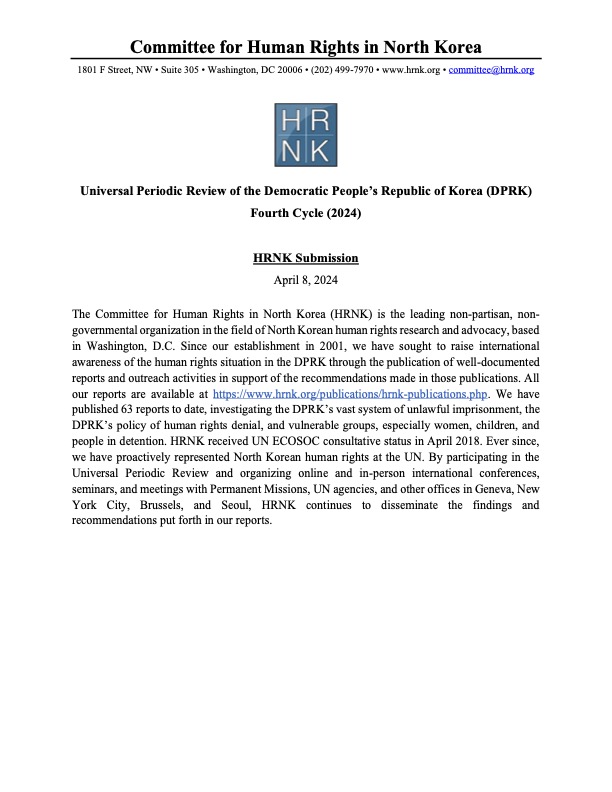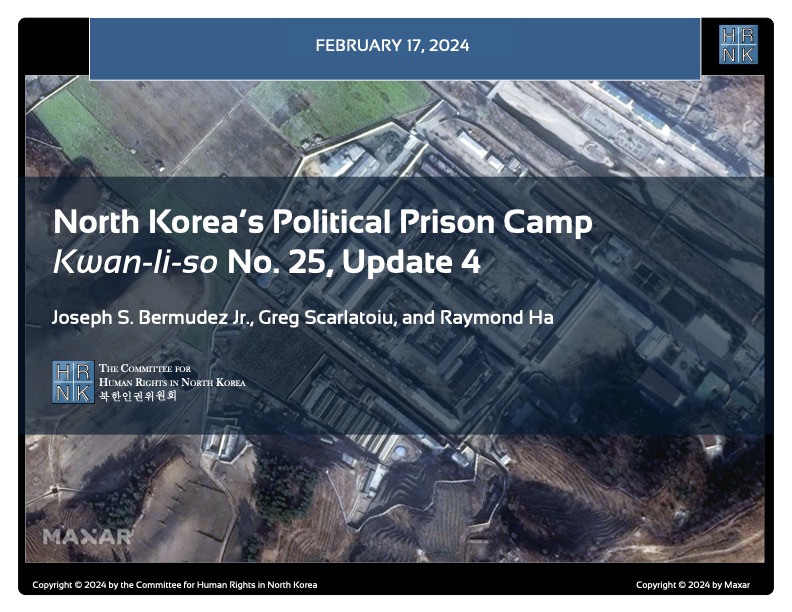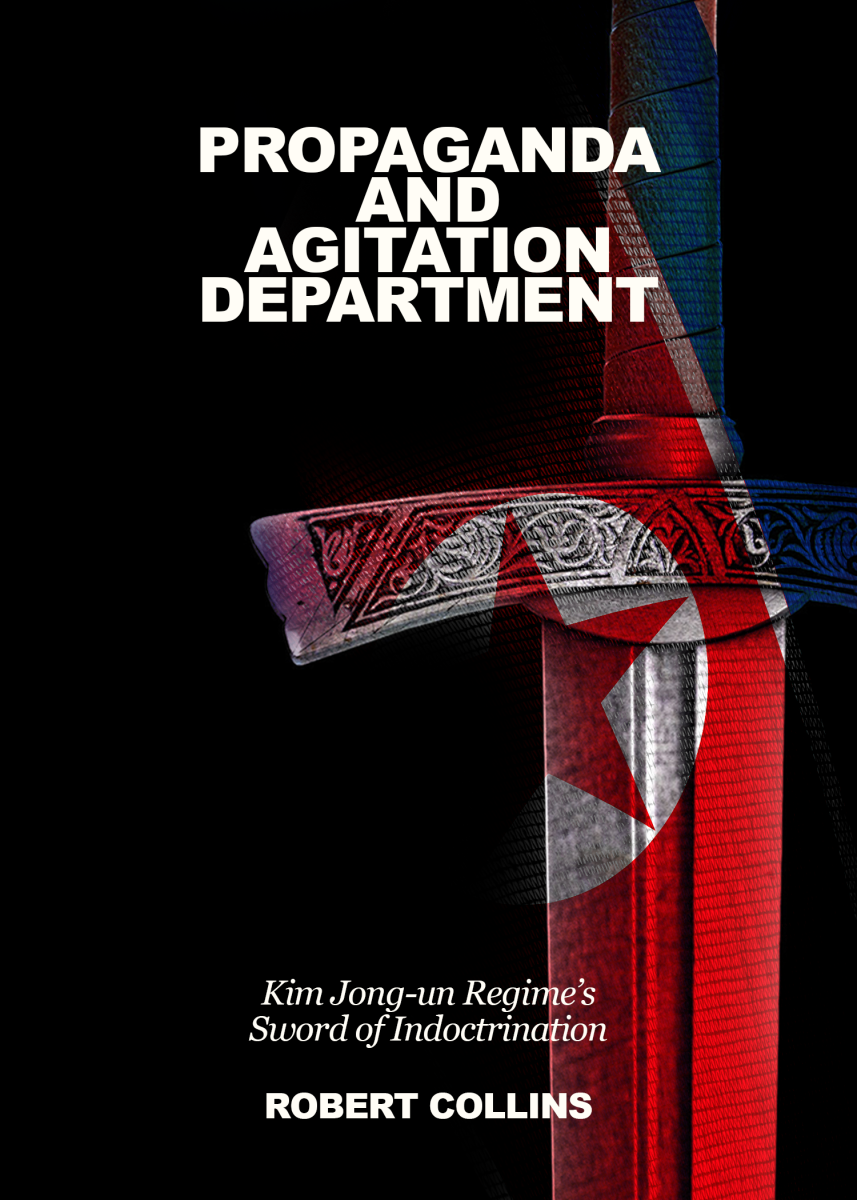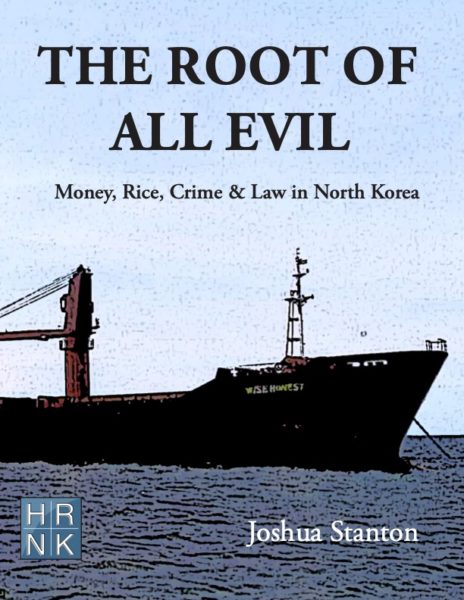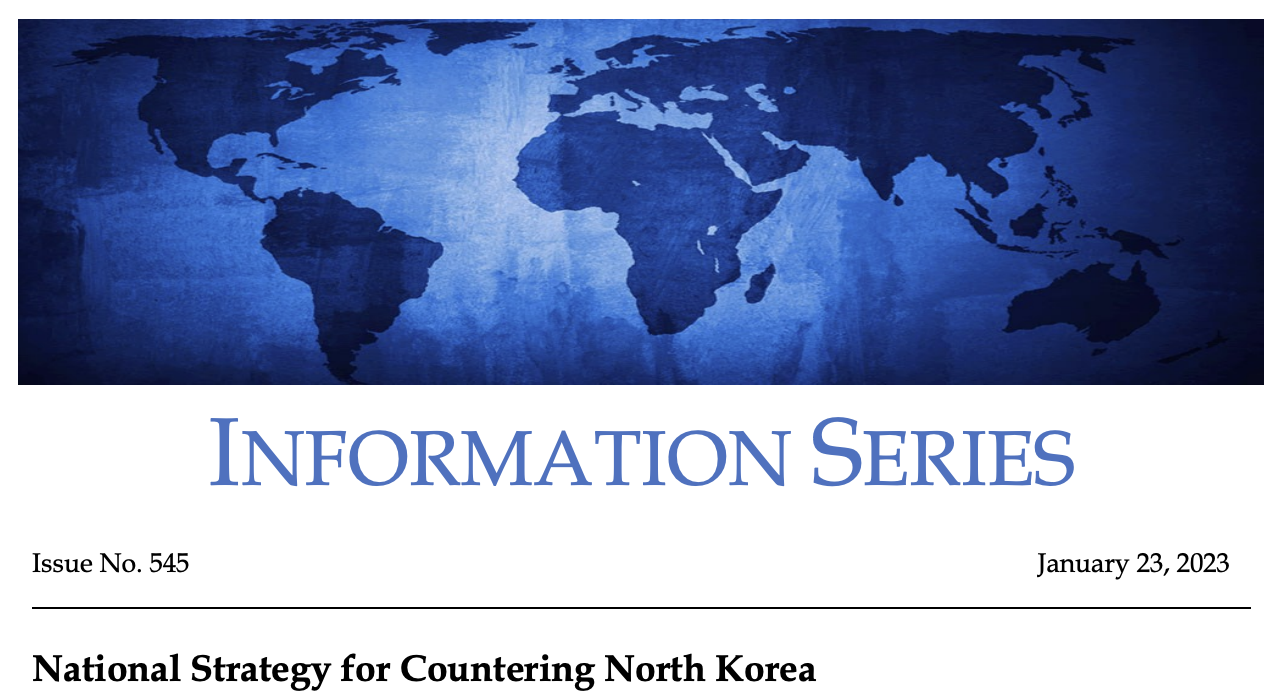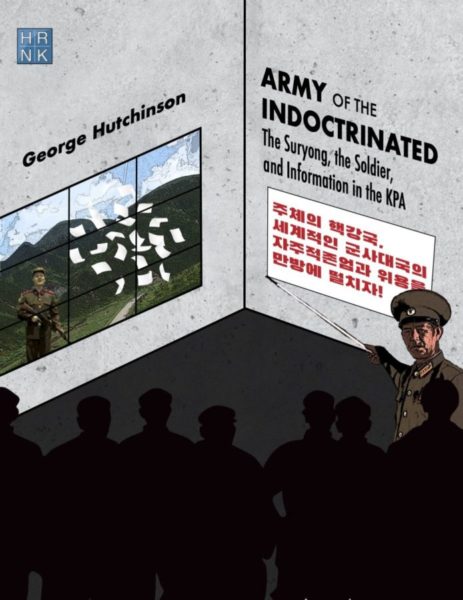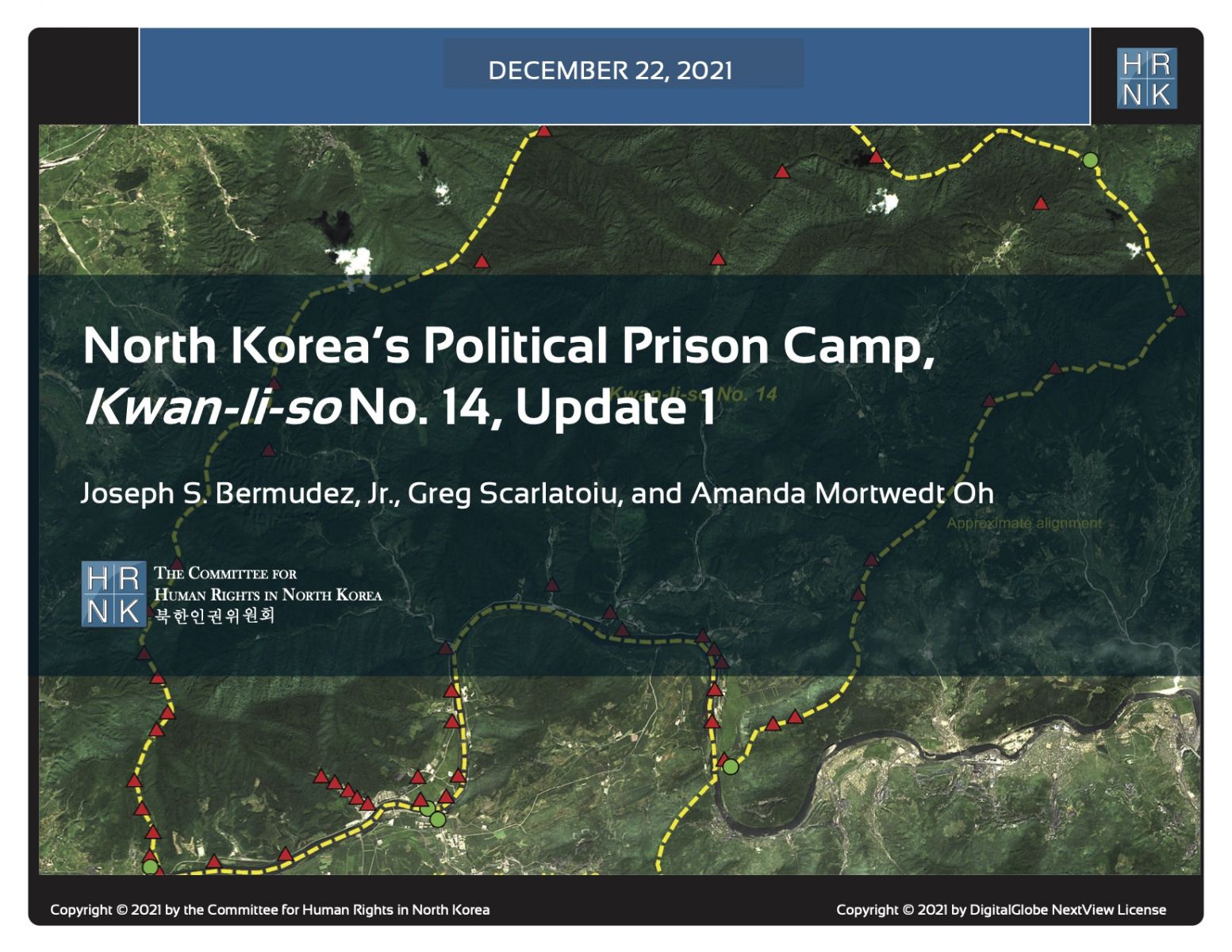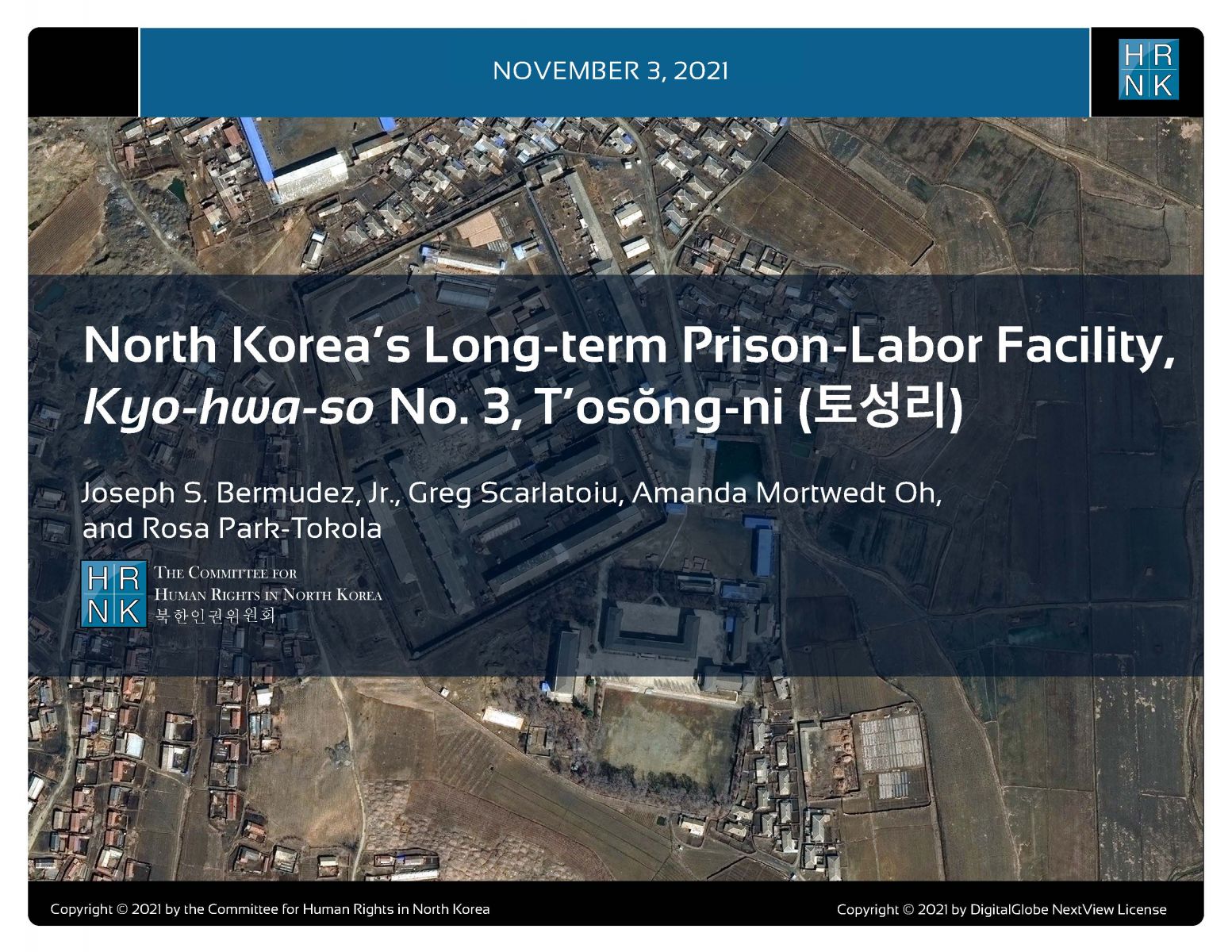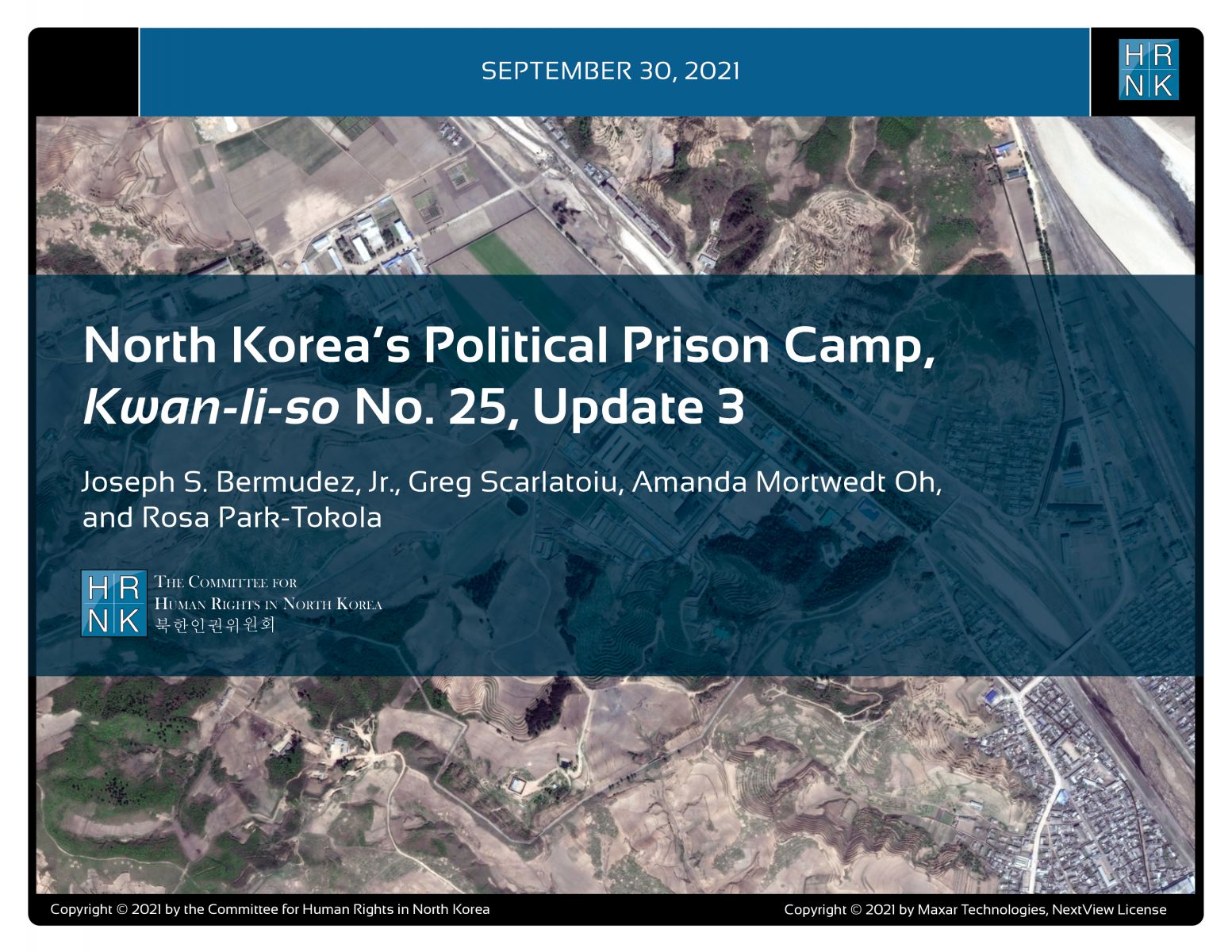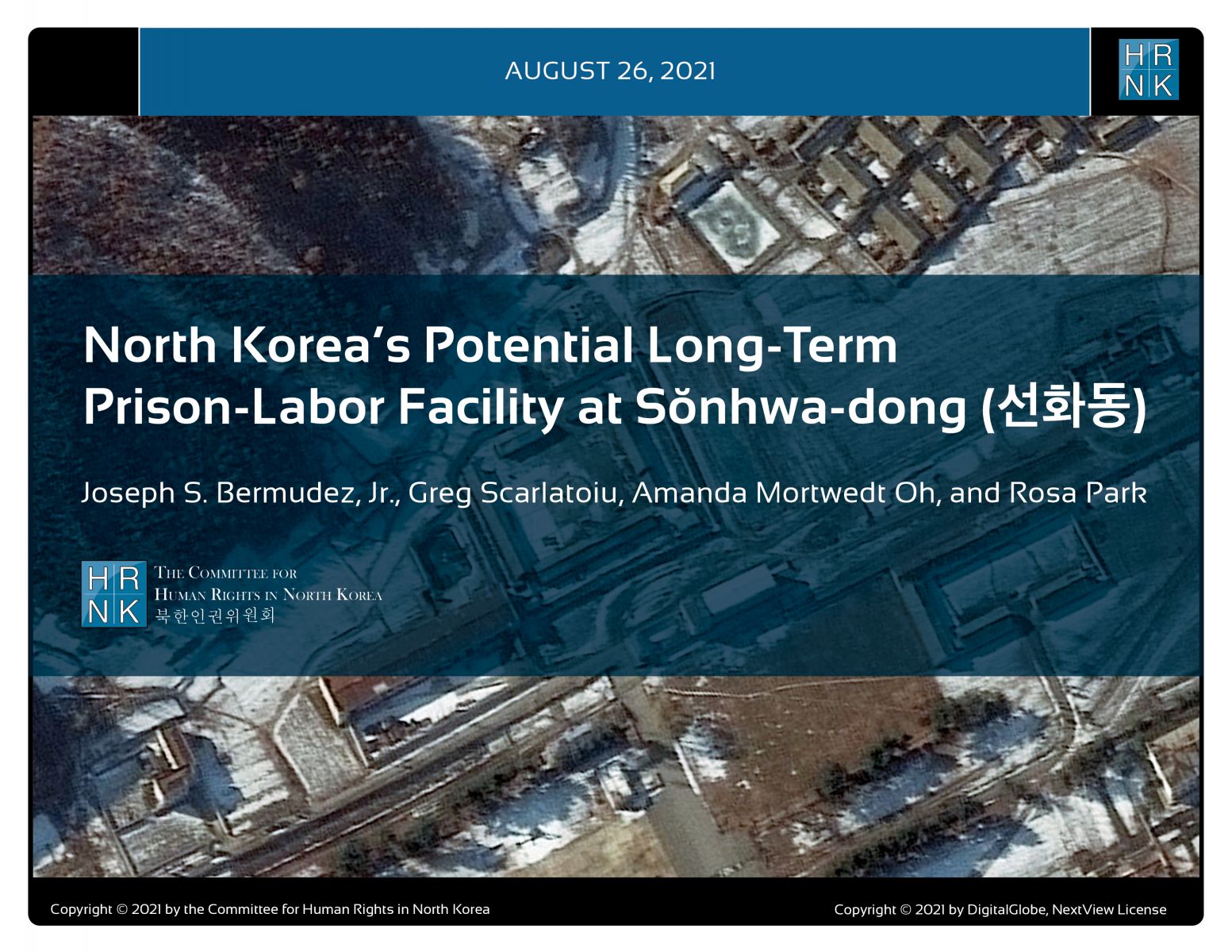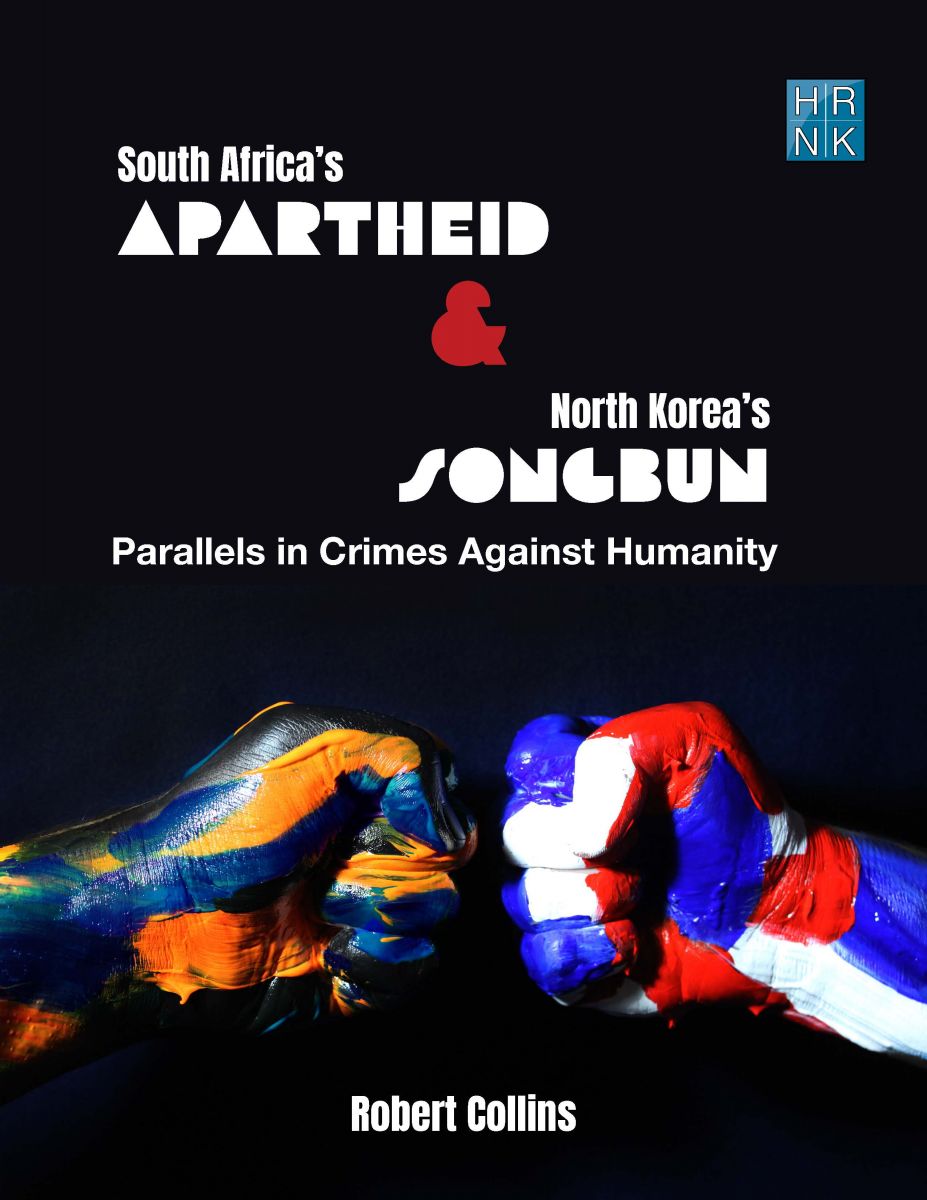BASED ON SATELLITE IMAGERY ANALYSIS (1968 to 2021), HRNK ISSUES BASELINE REPORT ON DETENTION FACILITY LOCATED IN KEY BORDER TOWN, JUST ACROSS THE AMNOK RIVER AND “FRIENDSHIP BRIDGE” FROM THE CHINESE CITY OF DANDONG. ROWS OF PRISONERS VISIBLE IN RECENT SATELLITE IMAGERY. COMPLETE COVERAGE OF THE EVOLUTION AND HISTORY OF THE CAMP. THE ROLE OF KYO-HWA-SO NO. 3 IN INTENSIFIED CRACKDOWN UNDER THE PRETEXT OF COVID, TO BE FURTHER DETERMINED.
THE REPORT IS AVAILABLE AS A PDF FILE THROUGH HRNK’S WEBSITE: https://www.hrnk.org/uploads/pdfs/KHS3_1101.pdf
WASHINGTON, November 3, 2021. The Committee for Human Rights in North Korea (HRNK) releases today an update on Long-Term Prison Labor Facility No. 3, T’osŏng-ni. This report is part of a comprehensive long-term project undertaken by HRNK to use satellite imagery and former prisoner interviews to shed light on human suffering in the Democratic People’s Republic of Korea (DPRK, more commonly known as North Korea) by monitoring activity at detention facilities throughout the country.
This is the first time HRNK investigates this particular facility. The report provides baseline analysis of Camp No. 3. Based on satellite imagery analysis, Kyo-hwa-so No. 3 was established around 1968 and remains a fully operational prison. This detention facility is well maintained by North Korean standards, as indicated by activity and general good maintenance inside the prison and in adjacent areas.
Both satellite imagery coverage of the facility and interviewee testimony indicate that Camp No. 3 prisoners are forced to work in agricultural production as well as in some light manufacturing, likely including clothing and bicycles.
This kyo-hwa-so is reported to be subordinate to the Prisons Bureau of the Ministry of Social Security (사회안전성, Sa-hoe An-jeon-seong). During early 2020, North Korea is reported to have changed the name of the Ministry of People’s Security back to its older name of Ministry of Social Security. Specifically, Camp No. 3 would be under the control of the Ministry’s P’yŏng-buk Bureau. However, it cannot be ruled out that it is subordinate to the Ministry’s Sinŭiju-si Bureau. The Ministry of Social Security itself directly reports to the State Affairs Commission, chaired by Kim Jong-un.
Report author, HRNK Principal Investigator and Senior Imagery Analyst Joseph S. Bermudez, Jr. pointed out: “Over nine years since its inception, HRNK’s satellite imagery-based monitoring of North Korea’s detention facilities has gained depth, breadth, and sophistication. The resolution of open-source imagery has been constantly improving. We can now see rows of prisoners at Camp No. 3.”
Bermudez further added: “Human intelligence relating to the camps has also been improving. In June 2019, with the great help of Mr. Ishimaru Jiro and Asia Press, HRNK was able to publish both ground and satellite imagery of Kyo-hwa-so No. 4 in Kangdong. Our ever-improving methodology, combining satellite imagery analysis and escapee testimony, provides a roadmap to seeking accountability, justice, and redress in North Korea.”
HRNK Executive Director Greg Scarlatoiu underlined the importance of the location of Long-Term Prison-Labor Facility No. 3: “T’osŏng-ni is located in (South) Sinŭiju, across the Freedom Bridge from the Chinese border city of Dandong. This is a location of great importance to both the illicit border trade fueling North Korea’s informal markets and the routes followed by North Koreans who attempt to escape the reclusive country. Under the pretext of COVID prevention, the Kim Jong-un regime has been cracking down hard on both markets and attempted escapes. Through further investigation and analysis, HRNK intends to better understand the role of Camp No. 3 in the ever-intensifying repression of the North Korean people.”
HRNK Director of International Advocacy and Development Amanda Mortwedt Oh emphasized that “thousands of miles away, we see North Korean prisoners in satellite imagery and, based on repeated testimony, know prisoners at these types of facilities are forced to work under inhumane prison labor conditions causing great suffering, sometimes to the point of death.” Mortwedt Oh further added: “People should not have to die in the name of ‘re-education through labor.’ This is 100% preventable by the North Korean leadership, particularly Kim Jong-un.”
RELEASE DETAILS
The report rollout and presentation by Joseph S. Bermudez Jr. will be held via Zoom virtual conference, from 11:00 a.m. to 12:00 p.m. Eastern Daylight Time (EDT), on Wednesday, November 3, 2021. HRNK Director of International Advocacy and Development Amanda Mortwedt Oh and HRNK consultant and North Korean escapee Doohyun (Jake) Kim will be discussants. HRNK Executive Director Greg Scarlatoiu will moderate.
If you are unable to participate, a video recording will be made available on HRNK’s YouTube channel after the event.
The report release is ON-THE-RECORD. For media inquiries, please contact Greg Scarlatoiu at [email protected].
HRNK was founded in 2001 as a nonprofit research organization dedicated to documenting human rights conditions in the Democratic People’s Republic of Korea (DPRK), as North Korea is formally known. Visit www.hrnk.org to find out more.
In this submission, HRNK focuses its attention on the following issues in the DPRK:
- The status of the system of detention facilities, where a multitude of human rights violations are ongoing.
- The post-COVID human security and human rights status of North Korean women, with particular attention to sexual and gender-based violence (SGBV).
- The issue of Japanese abductees and South Korean prisoners of war (POWs), abductees, and unjust detainees.
This report provides an abbreviated update to our previous reports on a long-term political prison commonly identified by former prisoners and researchers as Kwan-li-so No. 25 by providing details of activity observed during 2021–2023.
This report was originally published on Tearline at https://www.tearline.mil/public_page/prison-camp-25.
This report explains how the Kim regime organizes and implements its policy of human rights denial using the Propaganda and Agitation Department (PAD) to preserve and strengthen its monolithic system of control. The report also provides detailed background on the history of the PAD, as well as a human terrain map that details present and past PAD leadership.
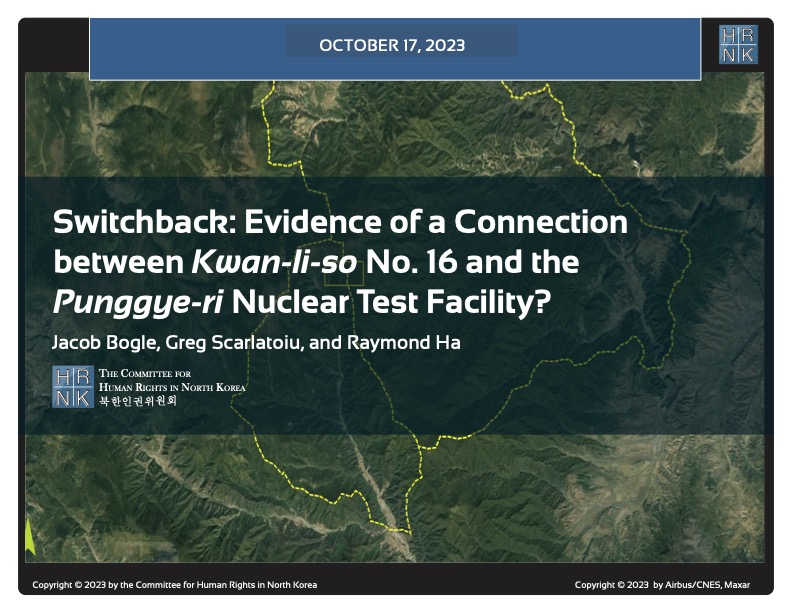
HRNK's latest satellite imagery report analyzes a 5.2 km-long switchback road, visible in commercial satellite imagery, that runs from Testing Tunnel No. 1 at North Korea's Punggye-ri nuclear test facility to the perimeter of Kwan-li-so (political prison camp) no. 16.
This report proposes a long-term, multilateral legal strategy, using existing United Nations resolutions and conventions, and U.S. statutes that are either codified or proposed in appended model legislation, to find, freeze, forfeit, and deposit the proceeds of the North Korean government's kleptocracy into international escrow. These funds would be available for limited, case-by-case disbursements to provide food and medical care for poor North Koreans, and--contingent upon Pyongyang's progress
For thirty years, U.S. North Korea policy have sacrificed human rights for the sake of addressing nuclear weapons. Both the North Korean nuclear and missile programs have thrived. Sidelining human rights to appease the North Korean regime is not the answer, but a fundamental flaw in U.S. policy.
(Published by the National Institute for Public Policy)
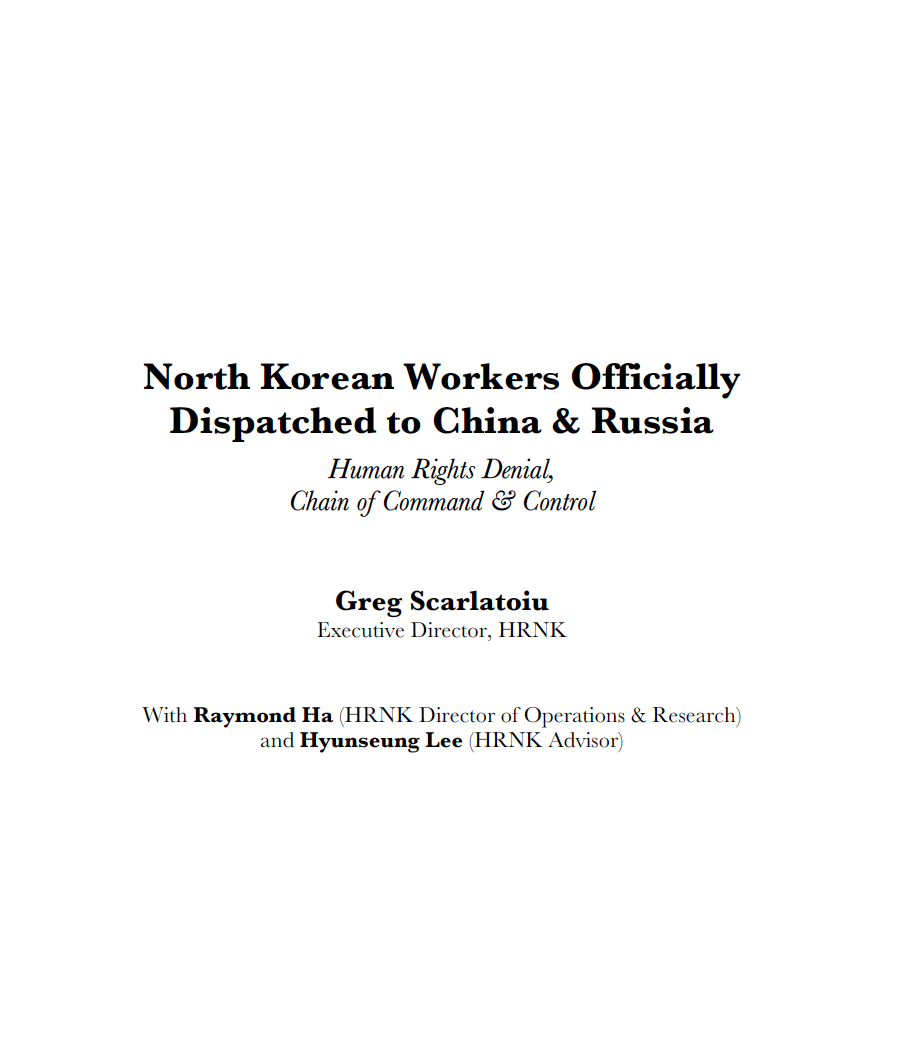
North Korea’s forced labor enterprise and its state sponsorship of human trafficking certainly continued until the onset of the COVID pandemic. HRNK has endeavored to determine if North Korean entities responsible for exporting workers to China and Russia continued their activities under COVID as well.
George Hutchinson's The Suryong, the Soldier, and Information in the KPA is the second of three building blocks of a multi-year HRNK project to examine North Korea's information environment. Hutchinson's thoroughly researched and sourced report addresses the circulation of information within the Korean People's Army (KPA). Understanding how KPA soldiers receive their information is needed to prepare information campaigns while taking into account all possible contingenc
This report is part of a comprehensive long-term project undertaken by HRNK to use satellite imagery and former prisoner interviews to shed light on human suffering in North Korea by monitoring activity at political prison facilities throughout the nation. This is the second HRNK satellite imagery report detailing activity observed during 2015 to 2021 at a prison facility commonly identified by former prisoners and researchers as “Kwan-li-so No. 14 Kaech’ŏn” (39.646810, 126.117058) and
This report is part of a comprehensive long-term project undertaken by HRNK to use satellite imagery and former prisoner interviews to shed light on human suffering in North Korea by monitoring activity at civil and political prison facilities throughout the nation. This study details activity observed during 1968–1977 and 2002–2021 at a prison facility commonly identified by former prisoners and researchers as "Kyo-hwa-so No. 3, T'osŏng-ni" and endeavors to e
This report is part of a comprehensive long-term project undertaken by HRNK to use satellite imagery and former detainee interviews to shed light on human suffering in the Democratic People’s Republic of Korea (DPRK, more commonly known as North Korea) by monitoring activity at political prison facilities throughout the nation. This report provides an abbreviated update to our previous reports on a long-term political prison commonly identified by former prisoners and researchers as Kwan-li-so<
Through satellite imagery analysis and witness testimony, HRNK has identified a previously unknown potential kyo-hwa-so long-term prison-labor facility at Sŏnhwa-dong (선화동) P’ihyŏn-gun, P’yŏngan-bukto, North Korea. While this facility appears to be operational and well maintained, further imagery analysis and witness testimony collection will be necessary in order to irrefutably confirm that Sŏnhwa-dong is a kyo-hwa-so.
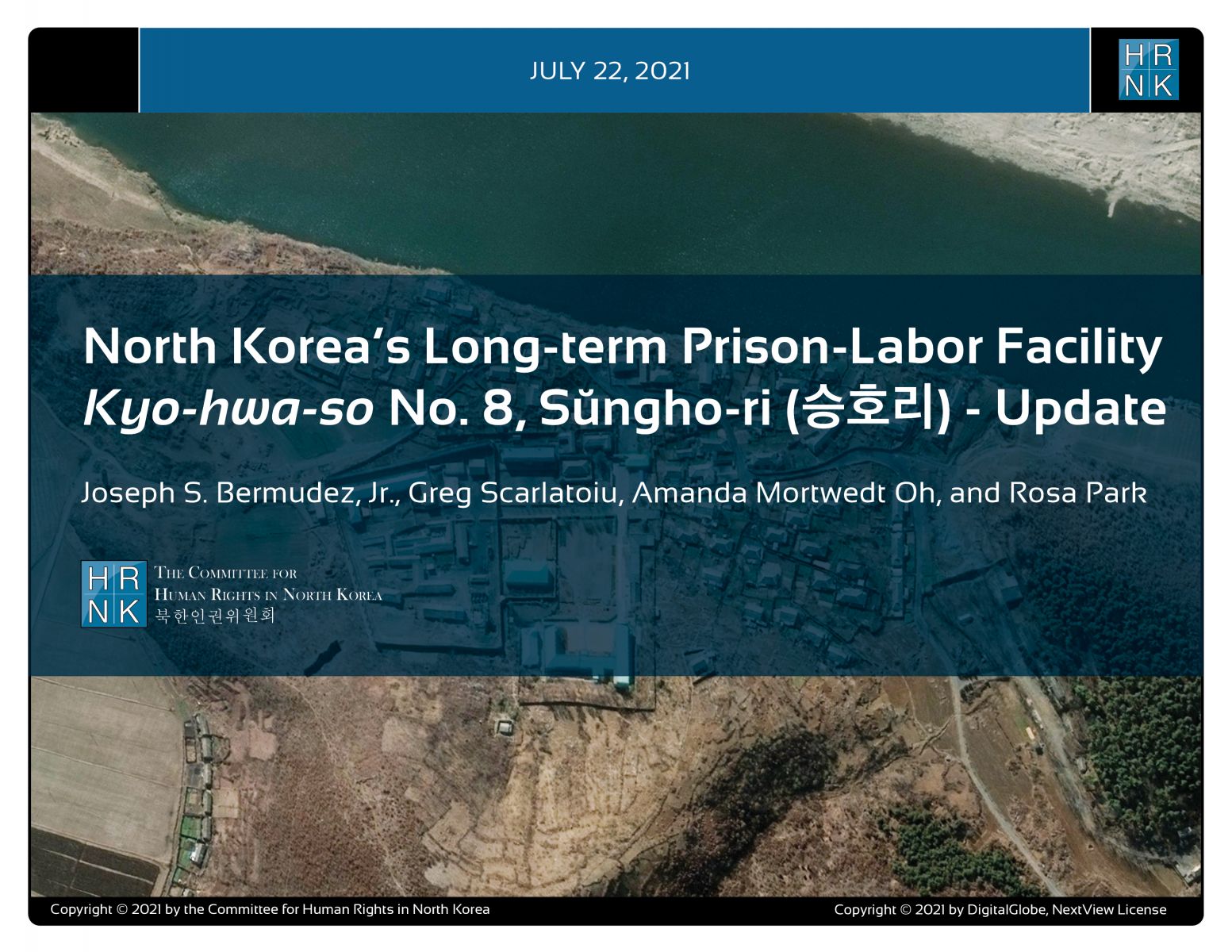
"North Korea’s Long-term Prison-Labor Facility Kyo-hwa-so No. 8, Sŭngho-ri (승호리) - Update" is the latest report under a long-term project employing satellite imagery analysis and former political prisoner testimony to shed light on human suffering in North Korea's prison camps.
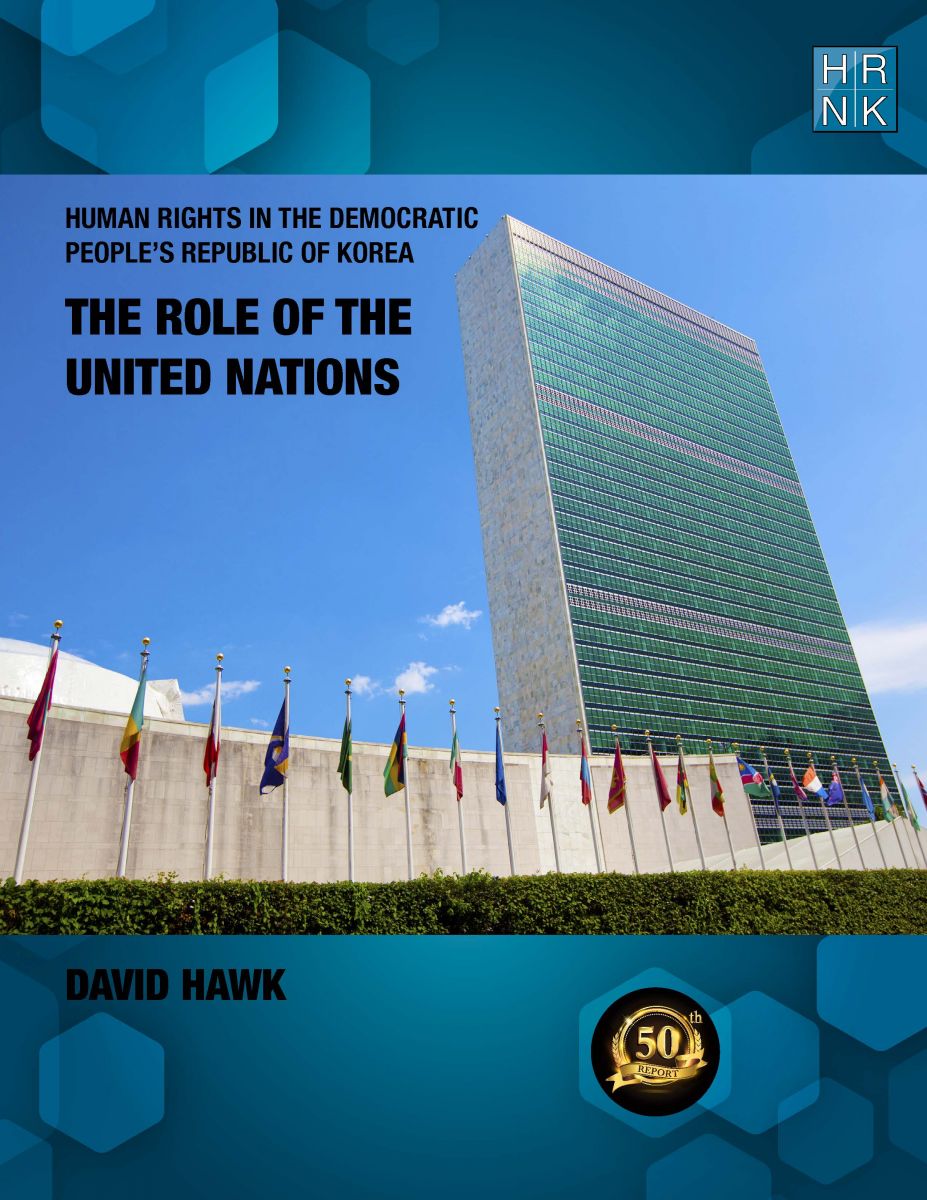
Human Rights in the Democratic Republic of Korea: The Role of the United Nations" is HRNK's 50th report in our 20-year history. This is even more meaningful as David Hawk's "Hidden Gulag" (2003) was the first report published by HRNK. In his latest report, Hawk details efforts by many UN member states and by the UN’s committees, projects and procedures to promote and protect human rights in the DPRK. The report highlights North Korea’s shifts in its approach
South Africa’s Apartheid and North Korea’s Songbun: Parallels in Crimes against Humanity by Robert Collins underlines similarities between two systematically, deliberately, and thoroughly discriminatory repressive systems. This project began with expert testimony Collins submitted as part of a joint investigation and documentation project scrutinizing human rights violations committed at North Korea’s short-term detention facilities, conducted by the Committee for Human Rights
